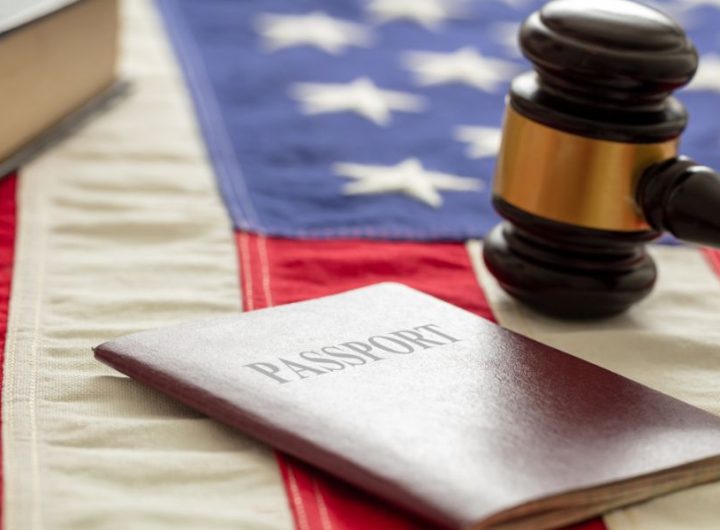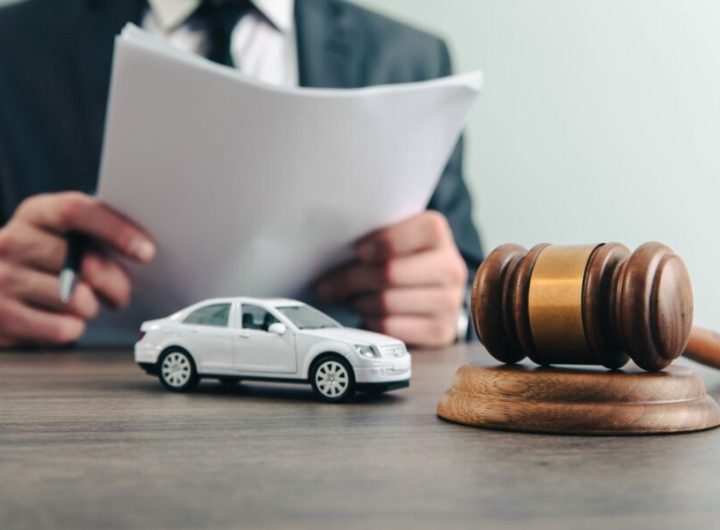
New York City is a maze of streets, scaffolds, subway stairs, delivery bikes, and high-rise workplaces, amazing, and occasionally unforgiving. When someone gets hurt, the path to compensation runs through a specific set of New York laws and deadlines that don’t leave much room for error. This guide breaks down the essentials: how personal injury claims work in NYC, what victims need to prove, and what they can realistically recover. It also touches on what’s new for 2025. For those who want to dig deeper or compare options, they can always Find out more by speaking with a qualified attorney who practices here every day.
Overview of personal injury statutes under New York law
New York personal injury law centers on negligence, the idea that a person or entity failed to use reasonable care, causing harm. Victims must prove four elements: duty, breach, causation, and damages. The city’s density doesn’t change those fundamentals, but it does affect how they’re proven and how quickly people must act.
Key timelines and rules most New Yorkers encounter:
- Statutes of limitations (general): Most negligence claims must be filed within three years (CPLR § 214). Medical malpractice actions typically have a 2.5-year limit (CPLR § 214‑a), with limited discovery-rule exceptions (e.g., certain cancer misdiagnoses under Lavern’s Law). Wrongful death claims generally have a two-year window (EPTL § 5‑4.1).
- Claims against municipalities: Suing the City of New York or related authorities involves a 90‑day Notice of Claim and a shortened time to file suit (often one year and 90 days) under the General Municipal Law. Missing these steps can be fatal to a case.
- Auto no‑fault (PIP) and the serious injury threshold: New York is a no‑fault state for car crashes. Injured occupants usually turn first to Personal Injury Protection (PIP) for up to $50,000 in basic economic losses, regardless of fault, subject to strict notice and proof requirements. To recover pain and suffering from a negligent driver, the claimant must meet the “serious injury” threshold defined in Insurance Law § 5102(d).
- Comparative negligence: New York follows pure comparative negligence (CPLR § 1411). Even if a victim is partly at fault, they can still recover, with damages reduced by their percentage of fault.
- Worker protections: On construction and maintenance sites, Labor Law §§ 240(1) and 241(6) provide powerful remedies for elevation-related hazards and certain code violations. Labor Law § 200 parallels general negligence principles for unsafe conditions or means and methods.
There’s no cap on non‑economic damages in New York personal injury cases, but some awards can be reduced based on collateral source set‑offs (CPLR § 4545) and comparative fault.
Common accident scenarios leading to injury lawsuits
The most frequent NYC injury claims grow out of everyday city life:
- Motor vehicle collisions: Crashes involving cars, taxis, rideshares, trucks, buses, and delivery vans. Intersection left-turn impacts and dooring incidents with cyclists are common patterns.
- Pedestrian and cyclist injuries: Crosswalk strikes, bike-lane intrusions, and e‑bike/e‑scooter conflicts. Speed cameras and Vision Zero enforcement help, but incidents persist, especially during rush hours.
- Premises liability: Slip, trip, and fall incidents on wet floors, broken stairs, defective sidewalks, and poorly lit hallways. In NYC, many sidewalk defects are the responsibility of abutting property owners, not the City, with exceptions for certain owner-occupied 1–3 family homes.
- Construction and worksite accidents: Falls from heights, falling objects, and equipment failures, often litigated under Labor Law §§ 240(1), 241(6), and 200.
- Building systems and fire incidents: Faulty elevators/escalators, gas or steam issues, sprinkler or alarm failures, and increasingly, lithium-ion battery fires tied to micromobility devices.
- Medical malpractice and nursing negligence: Misdiagnoses, medication errors, surgical mistakes, and care facility lapses.
Each category has its own evidence sweet spots, think building logs and prior repair records for premises cases, EDR/black box data and dashcams for vehicle cases, and job safety plans, GC/subcontractor contracts, and OSHA records for construction.
Proving negligence in dense urban environments
Proving fault in NYC often turns on speed and specificity. Surveillance is everywhere, but footage cycles quickly, sometimes within days, so fast preservation is critical. The same goes for 311 data, DOT permits, TLC trip records, and building maintenance logs.
Practical proof sources that routinely move the needle:
- Cameras and sensors: Private security video, traffic cams, MTA station cameras, and vehicle telematics. Prompt spoliation letters can help preserve them.
- Public records: 311 complaints, DOT sidewalk violation histories, lane closure permits, and prior incident reports. For sidewalk and roadway defects, municipalities often require prior written notice: tracking whether that exists is central to liability.
- Witnesses and scene documentation: Names and phone numbers, photos of the exact condition, weather snapshots, and measurements. In construction cases, foreman reports, toolbox talks, and JSAs can be decisive.
- Medical proof: Immediate evaluation cements causation. Gaps in treatment or unrelated prior injuries don’t kill a case automatically, but they do need clear medical explanation.
The legal standard remains familiar, what would a reasonably prudent person or entity have done under the circumstances? In practice, NYC’s density raises the bar on documentation. Jurors expect receipts: timestamps, video angles, diagnostic imaging, and a story that fits the physics of a busy city block.
Compensation categories including medical and economic losses
A fair damages picture accounts for both what’s already happened and what’s likely ahead. In New York, recoverable categories typically include:
- Medical expenses: ER visits, imaging, hospital stays, surgery, physical therapy, pain management, prescriptions, assistive devices, and projected future care costs backed by expert life-care plans.
- Lost income: Past lost wages and future earning capacity, often supported by employer records, tax returns, and vocational and economic experts.
- Out-of-pocket costs: Travel to treatment, co-pays, home modifications, and replacement services (like childcare or housekeeping during recovery).
- Non‑economic damages: Pain and suffering, loss of enjoyment of life, disfigurement, and emotional distress. New York has no statutory cap on these damages.
- Loss of consortium and services: For spouses or, in some contexts, family members.
- Punitive damages: Rare and reserved for egregious, willful, or reckless conduct.
Auto cases add the no‑fault layer: PIP pays basic economic losses first, then third‑party liability (and supplemental uninsured/underinsured motorist coverage) can address broader harms once the serious injury threshold is met. Collateral source rules may reduce certain economic awards to avoid double recovery, but they don’t touch pain and suffering.
Challenges victims face in building reliable legal claims
Even strong NYC cases run into predictable friction points:
- Deadlines and notices: The 90‑day Notice of Claim for municipal defendants is easy to miss. So are PIP submission and verification deadlines.
- Serious injury threshold: In motor vehicle cases, failing to meet Insurance Law § 5102(d) can bar pain-and-suffering claims, even with real discomfort. Consistent medical documentation is decisive.
- Comparative fault arguments: Defendants often claim the pedestrian “darted out,” the cyclist left the lane, or the worker didn’t tie off. Good site photos, training records, and human-factors testimony can blunt these.
- Video gaps and spoliation: Camera footage disappears fast. Without early preservation, a case may rely on memory and inference.
- Prior notice and immunity: For sidewalk and roadway defects, lack of prior written notice or governmental function immunity can sink municipal liability.
- Social media and medical history: Posts and old injuries get scrutinized. Plaintiffs should expect defense IMEs and careful record review.
The practical cure is early action: secure evidence, get consistent care, and maintain a tight paper trail that a jury can trust.
Role of attorneys in guiding injured parties through litigation
A seasoned NYC Personal Injury Lawyer is part investigator, part strategist, and part storyteller. From day one, counsel focuses on preserving proof and shaping a compelling, fact-backed narrative that fits New York’s legal standards.
Core contributions include:
- Rapid investigation: Scene visits, witness outreach, FOIL requests, spoliation letters, and collecting 311/DOT/TLC data before it’s gone.
- Medical coordination: Ensuring clients get evaluated by the right specialists and that causation and prognosis are clearly documented.
- Insurance navigation: Filing and managing PIP benefits, coordinating health liens, and pursuing third‑party liability and SUM/UM claims.
- Litigation execution: Drafting pleadings, handling depositions, retaining experts (orthopedists, accident reconstructionists, economists), and briefing motions aimed at liability and damages.
- Settlement and trial: Valuing cases using verdict/settlement analytics, negotiating with carriers, mediating effectively, and trying cases when necessary.
For those comparing options or looking for a deeper primer, this is NYC Personal Injury Lawyer | Article 6 in a broader series. Readers can Find out more by consulting counsel early, ideally before evidence fades or deadlines loom.


 Uncovering the Realms of Property Division During a Divorce Case
Uncovering the Realms of Property Division During a Divorce Case  Estate Planning After Divorce: Protecting Your Financial Future in Boston
Estate Planning After Divorce: Protecting Your Financial Future in Boston  The Role of Evidence in Winning a Car Accident Claim in Atlanta
The Role of Evidence in Winning a Car Accident Claim in Atlanta  Exploring the EB-5 Investor Visa Program and Immigration Pathways in 2025
Exploring the EB-5 Investor Visa Program and Immigration Pathways in 2025  Workers’ Compensation Rights and Employee Protections in Washington State
Workers’ Compensation Rights and Employee Protections in Washington State  Smart Strategies a Harlem Personal Injury Lawyer Uses to Maximize Car Accident Settlements
Smart Strategies a Harlem Personal Injury Lawyer Uses to Maximize Car Accident Settlements